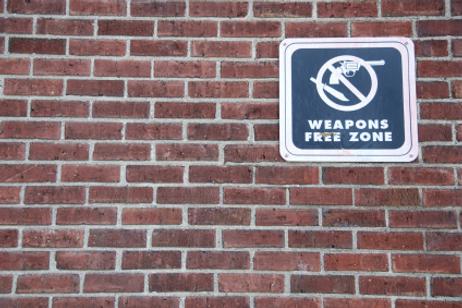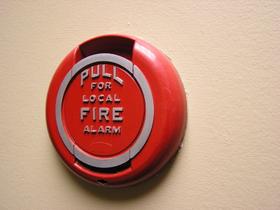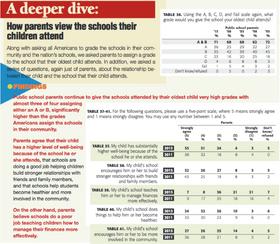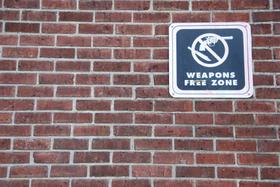In the wake of the Sandy Hook elementary school tragedy, parents spent the weekend holding their children a little tighter and telling them how much they loved them a little more often. Then Monday morning arrived, and it was time to send those children off to school once again. Only Monday was different – parents didn’t drop their children off with the same carefree spirit they had done just a few short days before. Now, there was fear and anxiety surrounding that seemingly simple, normal event, as parents wondered what their own schools were doing to keep children safer. Some parents purchased bulletproof vests for their children, others equipped little ones with bulletproof jackets. In the wake of Sandy Hook, schools too are working to find ways to improve safety and reassure parents that they can leave their children at school with some peace of mind.
This video describes the events of the Sandy Hook shooting.
Learning from Previous Events
While the Sandy Hook occurrence was one of the worst shootings at a public school to date, other similar tragic events have moved some schools to implement new security procedures already. Kentucky.com reports that in 1997, a 14-year-old student at Heath High School killed three classmates and wounded five others. The students had been gathered for a prayer meeting when the student began firing. One year after the event, the state of Kentucky mandated that every public school had to have a safety plan that took into account a broad range of potential situations, from an earthquake to an armed intruder.
The schools began locking their doors during the school day, and drills were held regularly. Both metal detectors and police officers began making an appearance in some schools. Procedures were implemented to allow schools to more carefully track any visitor that walked through a school door. Around half of the schools in the state have also undergone safety assessments by the Kentucky Center for School Safety located at Eastern Kentucky University. After news of Sandy Hook, superintendents of Kentucky school districts were urged to review safety practices once again.
This video offers a timeline of the Sandy Hook shooting events.
A New Look at Current Procedures
Schools in Pennsylvania are also taking a look at their current security measures to determine if anything more can be done to protect students, according to a report in the Daily Review. In at least one district in the state, officials are calling for changes to the current system, but also warn the public that changes won’t happen “overnight.” Districts are also weighing input from parents and faculty as to the effectiveness of current procedures and the possible addition of new ones.
Currently, Pennsylvania schools have a number of security measures in place, including surveillance cameras, video monitoring systems, buzz-in entry and crisis management plans. Schools also participate in regular drills, including drills involving an armed intruder in the school. The state also mandates that every school has a Student Assistance Program that allows students and faculty to anonymously monitor and report unusual behavior they witness.
Many Pennsylvania schools have police officers on staff as well. In light of the Sandy Hook event, some of those police officers are now remaining on school grounds throughout the entire school day. They are unsure at this time if that will become a regular practice.
This video outlines some of the lessons learned from the Sandy Hook shooting.
Adding New Security Features
Pennsylvania is not the only state adding security measures this week. Education News reports that other schools across the country are increasing security measures in an effort to prevent another tragedy. Many police departments nationwide are stepping up patrols in school neighborhoods and making a more visible presence within some schools. Schools are taking another look at current security plans and vigilance over keeping students behind locked doors has been intensified at many locations.
Entrances to many schools have been severely limited, forcing visitors to the school to come through a single, carefully monitored doorway. Visitors may find it more difficult to get past the front office this week once arriving at the school. Some schools are requiring all visitors to show identification before gaining access to areas with students. Stickers or badges are now being distributed, to make it easy for students and faculty to identify legitimate, approved guests.
In addition, schools across the country are adding more mental health professionals to current staffing to help students cope with the recent tragedy. Those professionals can also talk to students who feel unsafe heading back to their own schools after hearing the news. District superintendents and principals are also sending out their own communication to parents, assuring them that every possible step is being taken to keep children safe.
Moving Forward
As schools nationwide begin to move forward from the national tragedy at Sandy Hook Elementary last week, questions will remain. Many who dare to speak truthfully about security at schools today have said that Sandy Hook was doing everything in its power to keep its students safe.
“Anybody with enough firepower can come into a school and do what that guy did,” Jon Akers, director of the Kentucky Center for School Safety, told Kentucky.com. “If you have enough firepower, you can go through anything. That’s the reality of it that people don’t want to hear, but that’s the truth.”
Despite lingering doubts, there are still many steps that can reduce risk and protect students during the school day. Bill Bond, former principal of Heath High School at the time of that shooting and current school safety specialist for the National Association of Secondary School Principals, told CNN he encourages students to communicate with faculty and others about concerns or strange behavior they might witness. Bond asserts that is as effective a safety measure as any video camera or locked door today.
Questions? Contact us on Facebook. @publicschoolreview



































